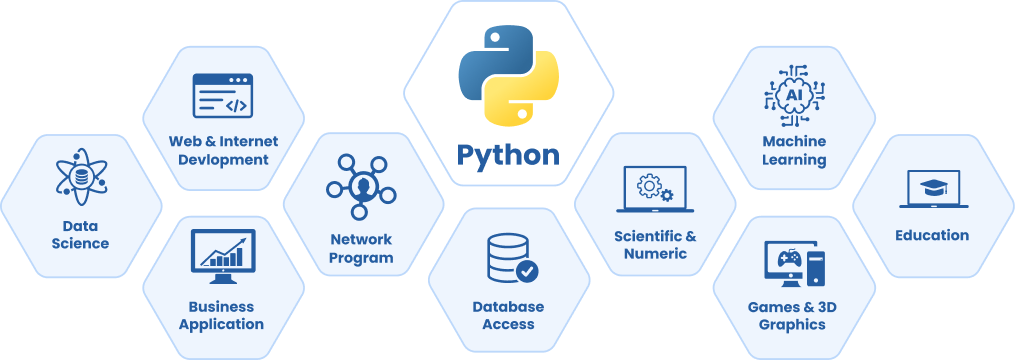Do you know that five billion device on Earth use Python ?
Custom code for devices, IoT (Internet of Things), and other embedded systems refers to software that is specifically written to run on a particular device or platform. This code may include device drivers, firmware, and other low-level software that interacts directly with the hardware.
It's worth noting that these steps may vary depending on the specific project and requirements. Additionally, safety is a crucial factor to consider during all the steps of building a BMS system, as it deals with energy storage, which is a critical aspect of many applications.
For example, custom code for an IoT device might include software that controls the device's sensors and actuators, communicates with the device's cloud-based services, and manages the device's power consumption. Custom code for devices can be written in a variety of programming languages, such as C, C++, and Python. The choice of language will depend on the specific requirements of the device, including its processing power, memory constraints, and power consumption.
Developing custom code for devices and IoT systems can be challenging due to the limited resources and constraints of the devices. It's important to consider the device's capabilities, performance and power consumption when designing, developing and testing the code. Additionally, it's important to also consider security when developing custom code for devices, IoT systems and embedded systems, as these devices often contain sensitive information and can be vulnerable to hacking and other cyber threats.

Programming embedded devices with Python involves writing software that runs on the device's microcontroller or microprocessor. The software, also known as firmware, controls the device's hardware and interacts with any connected sensors or actuators.
One of the main advantages of using Python for embedded programming is its ease of use. Python is a high-level programming language that is easy to learn, with a simple syntax and a large ecosystem of libraries and modules. This can make it quicker and easier to develop and test code, compared to low-level languages like C or assembly. When programming embedded devices with Python, developers typically use a subset of the Python standard library that is optimized for small, resource-constrained devices. This subset, known as MicroPython, is a version of Python that has been optimized to run on microcontrollers and microprocessors with limited memory and processing power. MicroPython includes a subset of the Python standard library, as well as additional libraries and modules that are specific to embedded programming.
To program an embedded device with Python, developers typically use a toolchain that includes a compiler, a debugger, and a programmer. The compiler is used to convert the Python code into machine code that can run on the device's microcontroller or microprocessor. The debugger is used to test and debug the code, and the programmer is used to upload the code to the device. In summary, programming embedded devices with Python involves using a subset of the Python standard library, known as MicroPython, which is optimized for small, resource-constrained devices, and a toolchain that includes a compiler, a debugger, and a programmer. This approach allows for faster development and test of the code, and ease of use of the language.
Example of steps design Battery Management System (BMS) by AceCloud.
Building a BMS (Battery Management System) system involves both hardware and software components. Here is a general overview of the steps involved in building a BMS system:
System design
Define the requirements for the BMS system, including the type and number of batteries, the operating conditions, and the required performance and safety features.
Hardware selection
Select the hardware components, such as battery cells, voltage and current sensors, communication interfaces, and control and protection circuits.
Deployment and maintenance
Deploy the BMS system to the intended environment and perform regular maintenance to ensure that the system is operating correctly and that the batteries are being properly managed.
Firmware development
Write and test the firmware, which is the low-level software that runs on the microcontroller or microprocessor of the BMS system. The firmware controls the hardware and manages the communication with other systems.
Software development
Develop the software that runs on the host computer or cloud-based services. This software can include user interfaces, data logging, and communication protocols.
Integration and testing
Integrate the hardware and software components of the BMS system and perform testing to ensure that the system is working properly and meets the requirements.
Assemble the hardware components, including soldering, wiring, and testing.
Apps
Image ACE


